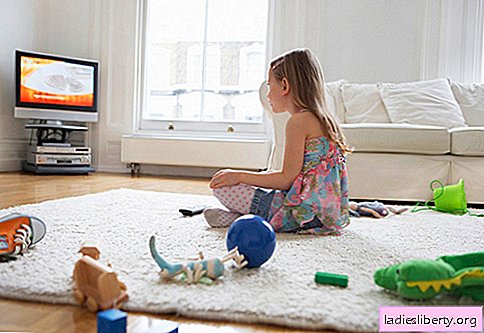
In the master’s hands, a simple decor element - a lambrequin - completely changes the composition of the window. Romantic style will be replaced by modernism. Retro - high-tech.
A correctly selected lambrequin will only decorate the room and visually enlarge the window. Today's master class is dedicated to creating a do-it-yourself lambrequin in the style of "elegant swag."

Materials and tools: fabric for drapery 138 cm wide, lining fabric 138 cm wide, linen ribbon 2.5 cm wide, decoration tape, mounting board (its width is equal to the width of the window or more), thread (you can use a contrast), furniture stapler, craft - paper (high-strength wrapping paper, very similar to cardboard), a sheet of paper, a pencil, a protractor, chalk tailor's, ironing board, iron, sewing machine, thread.
Stage 1
Measuring part

According to the picture:
1. The length of the mounting board will be indicated by the letter A;
2. The letter B will denote the depth of the crease;
3. The letter C denotes the sagging folds, its width from the bottom of the value of B to the edge of the lambrequin. It is recommended to measure this value with a simple, non-elastic cord;
4. The value D is assigned to the length of the lateral folds vertically for the lambrequin with your own hands. Another name is "cascade length", where the letter E is its width.
Stage 2
Modeling patterns

1. A sheet of paper is taken. It draws a straight line from top to bottom. Its upper point will have the value A. The length of the segment (or fold depth) is: 2 times the fold depth + 12.8 cm. The lower point will have the value B;
2. From point A, a line is drawn to the right. The length of this segment is ¼ the length of the board for installation. At the end of the segment, point C is placed;
3. On the right side of point A, the same segment is drawn mirror-like that of the speaker;
4. A line is drawn from the bottom point B to the right. It is equal to half the length of the arc. At this point, point F;
5. On the left side of point B, the same segment is drawn mirror-like;
6. From point E, the perpendicular up is restored. The line length is half the height of the mounting board. Point G. is set. If the angle of inclination is different than that indicated in the figure, do not worry. The drawing is for example, not as a stencil;
7. From point F, the same perpendicular is mirrored. Point H is designated;
8. The segment AB is measured and divided in half. This place is marked by point I;
9. Knowing the length of the AI segment, a square is drawn to the right. Points L, J and M are marked;
10. Knowing the length of the segment IB to the right side, a square is also drawn. New points are not indicated;
11. To the pattern are added allowances on all sides for the do-it-yourself lambrequin.
Stage 3
Modeling a pattern for a cascade (for a side fold)
1. A segment is drawn down from point J. It is equal to the length of the side cascade plus 2.5 cm. The end of the segment is indicated by the point K;
2. Check the correctness of the construction of the pattern: the segment LG should be equal to the segment CD;
3. Points M and K are connected in one segment;
4. A line is drawn to the right of point J. It is equal to the width of the mounting board. At the end, point N is marked;
5. The same line as JN is drawn to the right of point K. Point O is marked;
6. NO line segments are connected by a line;
7. Allowances are drawn for the pattern from all sides.
Stage 4
Do-it-yourself crease modeling for pelmet on fabric
The elegance of the lambrequin gives majestic folds. The assembly gives volume to the product, but not in the center, but on the sides of the decorative decoration.

1. The folds are already built on the fabric itself. With the help of tailor's chalk folds are noted;
2. 12.5 cm recede from the top. And so to the very bottom;
3. The distance from the bottom edge is 10 cm.
Stage 5
DIY fold cascade modeling

The folds for the side of the lambrequin are built by analogy with Stage 4. Indentation is not done diagonally, but horizontally. The distance between the folds is 12.5 cm.
Stage 6
At this stage, the fabric parts are cut. It is required to make the central part of the lambrequin with your own hands - swag - in the amount of 1 piece, lining fabric in the amount of 1 piece and side folds - cascades - in the amount of 4 pieces.
Stage 7
The mounting board is upholstered with curtain fabric.
Stage 8
1. The edge of the central folds is tucked up at the top of the stock area. The fold needs to be ironed;
2. Similar actions are performed with the lining fabric;
3. Both parts are applied to each other. Decorative braid is taken. It is swept along the lower edge between the two main fabric and the lining;
4. Both fabrics are sewn into one piece. Through the hole left at the top, the product is turned on the front side. The hole is manually sewn with a blind seam;
5. The seams must be ironed;
6. Similar actions are performed with parts for the cascade. First allowances are ironed;
7. The front sides are sewn to the wrong side, and through the hole left above, they are turned out. The holes are sutured;
8. Cascades in the seam area are ironed;
9. Marks for folds are duplicated on the central swag and cascades by tailor's chalk.
Stage 9
Do-it-yourself lambrequin installation
1. Take a mounting board, previously upholstered in fabric. The center is marked with chalk on it;
2. Take either side of the cascade and attach to the board. Its textile edge should protrude 2.5 cm upwards;
3. At the corner of the board, the first fold is formed, which is fastened with a furniture bracket;
4. The remaining folds are also fixed on the staples;
5. Similar actions are performed with a cascade of the other side;
6. The middle of the top swag leans against the middle of the mounting board. Drapery fabric should not protrude upward by 2.5 cm, but by 5 cm. A bracket is installed;
7. The first folds fold right and left. Brackets are set;
8. The remaining folds are attached to the brackets. The latter remains untouched;
9. The tips of the central swag are superimposed on top of the cascades on the left and right. They are also fixed with brackets;
10. The board is removed with the cloth. A braid is sewn along the upper edge, which will hide all the brackets underneath.
Stage 10
Lambrequin, made by yourself, is decorated with decorative tassels, ribbons and braid. The mounting plate is installed back.
An elegant shape is cut out of kraft paper for additional decoration. It is recommended to use openwork technique. She looks spectacular and aristocratic.












